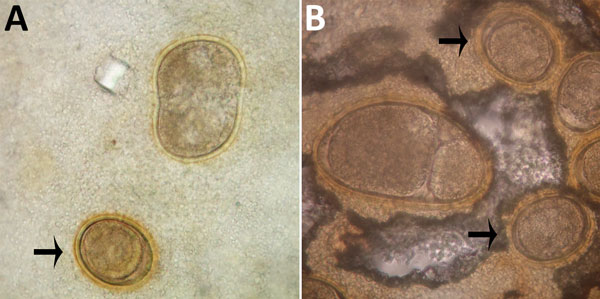Volume 24, Number 8—August 2018
Synopsis
Abnormal Helminth Egg Development, Strange Morphology, and the Identification of Intestinal Helminth Infections
Figure 1

Figure 1. Abnormalities of Ascaris lumbricoides eggs from patients in the Solomon Islands, visualized on Kato-Katz. A) Giant egg with irregular indented shape. B) Giant egg with 2 morulae. Arrows indicate eggs of normal morphology. Original magnification ×400.
Page created: July 18, 2018
Page updated: July 18, 2018
Page reviewed: July 18, 2018
The conclusions, findings, and opinions expressed by authors contributing to this journal do not necessarily reflect the official position of the U.S. Department of Health and Human Services, the Public Health Service, the Centers for Disease Control and Prevention, or the authors' affiliated institutions. Use of trade names is for identification only and does not imply endorsement by any of the groups named above.